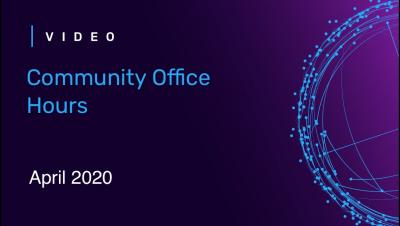Operations | Monitoring | ITSM | DevOps | Cloud
InfluxData
InfluxDB Community Office Hours - April 2020
Apache Arrow, Parquet, Flight and their ecosystem are a game changer for OLAP
Apache Arrow, a specification for an in memory columnar data format, and associated projects: Parquet for compressed on disk data, Flight for highly efficient RPC, and other projects for in-memory query processing will likely shape the future of OLAP and data warehousing systems. This will mostly be driven by the promise of interoperability between projects, paired with massive performance gains for pushing and pulling data in and out of big data systems.
Getting Started with the InfluxDB Go Client
There are several ways to write and query InfluxDB v2 (either open source or Cloud). You can use the HTTP API, Telegraf and any of 200+ plugins, or a client library. However, if you’re specifically looking to build an application with a fast way to fetch data concurrently with an easy binary deploy then — you guessed it — you’d probably want to use the InfluxDB Go Client.
Getting Started with JavaScript and InfluxDB 2.0
With 200+ plugins, Telegraf has a wide variety of methods for scraping, writing, and querying data to and from InfluxDB. However, sometimes users need to perform data collection outside of the capabilities of Telegraf. Perhaps they need to collect custom data and monitor application performance. Maybe they want to take advantage of external tools and libraries to create beautiful web-based visualizations for their users.
InfluxDB is Now Available in Google Cloud Marketplace
In February, we announced the general availability of InfluxDB on Google Cloud, as well as a rich set of integrations that allow you to use our time series data platform to monitor your Google Cloud services, store sensor data from Google IoT core, and send your time series data to Pub/Sub for analysis on Google AI Platform.
How Road Traffic Insights Derived from Sensor Data Improve Public Safety and Reduce Emergency Services Response Times
It’s easy to see the value of sensor data that enables acting in time. Just picture driving as the scene of a massive traffic accident unfolds and ambulances race to the rescue…what a difference a few seconds can make. What if past traffic patterns could help city operators predict and manage traffic flow at critical times?
Slack Tips for Remote Communication
As the world is now forced into remote working due to COVID-19, I believe it’s important to make some things explicit that have been implicit for many a remote worker over the past few years with the rise of Slack in the distributed office. These tips are designed to be simple and actionable, with the goal of improving your remote working experience.
InfluxDB Community Office Hours - March 2020
Zeppelin, Spark, and InfluxDB for Big Data Time Series Scenarios
So you’re using InfluxDB and Telegraf. Perhaps you’re writing over a million metrics points per second. Perhaps you’ve used Flux to do some data exploration. However, you now find yourself in a little bit of a pickle. You need to process and analyze this large amount of data, and you’d prefer to do that work in your favorite language with your go-to libraries.





